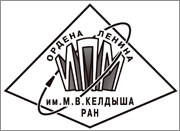|
Translation-invariant bipolaron theory of superconductivity and spectroscopic experiments
V. D. Lakhno
Abstract:
The explanation of the nature of superconducting gap in high temperature superconductors (HTSC) is a fundamental task which solution can lead to the understanding of superconducting mechanism. However it has not been fully solved as yet. From the mid of the twentieth centure when Bardeen, Cooper and Schrieffer constracted their theory it has been believed that a superconducting gap is a collective phenomenon of electron excitations. In this work it is demonstrated that according to translation-invariant bipolaron theory of HTSC the different types of experiments measure for the gap different values. Thus tunneling experiments determine the bipolaron energy for a superconducting gap. On the other hand the angle — resolved photoemission spectroscopy method measures the phonon frequency for which the electron-phonon interaction is maximum. Such effects as kinks in spectral measurements of gap, its angular dependence, existence of pseudogap and others have got natural explanations.
Keywords:
Bose–Einstein condensate, angle-resolved spectroscopy, Raman scattering.
Citation:
V. D. Lakhno, “Translation-invariant bipolaron theory of superconductivity and spectroscopic experiments”, Keldysh Institute preprints, 2019, 052, 20 pp.
Linking options:
https://www.mathnet.ru/eng/ipmp2690 https://www.mathnet.ru/eng/ipmp/y2019/p52
|

| Statistics & downloads: |
| Abstract page: | 245 | | Full-text PDF : | 45 | | References: | 29 |
|




 Contact us:
Contact us: Terms of Use
Terms of Use
 Registration to the website
Registration to the website Logotypes
Logotypes








 Citation in format
Citation in format 